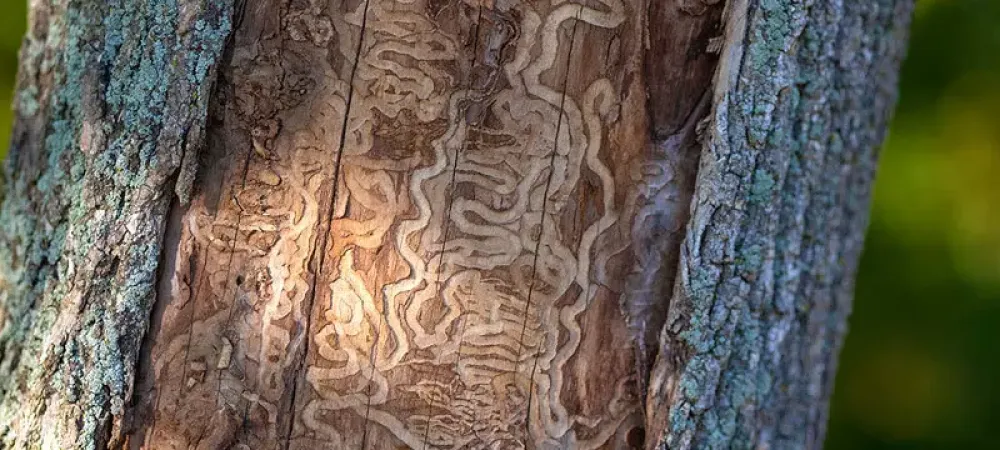Emerald Ash Borer Beetle Damage and Identification

The Emerald Ash Borer (EAB) is an invasive insect originally from Asia. Their impressive color is worthy of the name, but these metallic-green beetles are so destructive that they can devastate an entire forest in just 10 years. Learn how to identify emerald ash borer beetles by what they look like and the damage they cause.
How to Identify an Emerald Ash Borer
Emerald ash borer adults are tiny, metallic green beetles, about the size of a grain of rice. But it is the larvae, which are cream-colored worms with bell-shaped segmented bodies. They wind back and forth carving S-shaped galleries in the wood.
Emerald Ash Beetle Damage
As soon as they emerge from their eggs, EAB beetles begin to tunnel into the cambial layer of the tree, disrupting the transport of water and essential nutrients. An EAB infestation can be hard to detect until trees are too damaged to tolerate treatment, so it’s important to look out for the warning signs of emerald ash borer tree damage such as:
- Canopy Thinning: As the larvae damage the tree tissue, the upper canopy and branches start to die off. It should be noted that yellowing leaves can also be caused by a variety of tree diseases.
- Increased Woodpecker Activity: The thinning bark and abundance of larvae and beetles can attract natural predators, such as woodpeckers.
- Epicormic Shoots: Additional branches may begin to grow directly from the trunk of the ash tree, taking advantage of the openings left by EAB and competing for already limited resources in the trunk tissue.
- S-Shaped Galleries Underneath The Bark: As larvae move around to feed, they create S-shaped or serpentine tunnels, about ⅛ inches wide. These tunnels are commonly filled with frass, which is a mixture of sawdust and droppings.
- D-Shaped Exit Holes: When the adult EAB beetles emerge from the trees in June and July, they leave distinct D-shaped holes in the bark. These holes can have any orientation and are generally ⅛ inches in diameter.
As it can be difficult to identify the signs of an Emerald Ash Borer infestation, we highly encourage you to reach out to our experts for our emerald ash borer treatment and prevention services.
